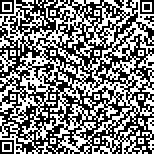| 本文已被:浏览次 下载次 |

码上扫一扫! |
|
|
|
| Study on thermal radiation model of large-scale continuously released jet fuel spill fire |
|
LIU Quanyi, LÜ Zhihao, ZHI Maoyong, LI Zhifa, SUN Zhongzheng
|
|
(College of Civil Aviation Safety Engineering, Civil Aviation Flight University of China, Guanghan 618307, China)
|
| Abstract: |
| Fire and explosion accidents caused by leakage during the storage and transportation of jet fuels will lead to serious harm and damage to facilities. Spill fire is a complex process of oil combustion and flow coupling. For the sake of ensuring the safety of jet fuel storage and transportation and fire safety in airports, the thermal radiation of continuously released jet fuel spill fire was studied. An experimental platform was designed and built for jet fuel spill fires. The jet fuel was selected as the fuel in the continuous spill fire, and the horizontal surface (with the slope angle 0°) was taken as the baseline case. Then the experiment on the large-scale continuously released jet fuel spill fire was performed with different substrate slopes. The radiant heat flux of spill fires was measured as well as the leakage rate, the leakage time, et al., and the thermal radiation intensity of continuous leakage of jet fuel with different leakage rates was analyzed. A solid flame model for continuous jet fuel spill fire was established and the effect of substrate slope on the thermal radiation was examined. The results show that the jet fuel spill fire in a rectangular oil tank can be regarded as a cuboid solid flame model. Based on this model, the surface emission power of the solid flame model is estimated to be about 25.7 kW/m2. The thermal radiation intensity of the spill fire measured by the experiment agrees well with the empirical value. By comparing different conditions of jet fuel spill fire, it is found that the prediction of thermal radiation intensity with the substrate slope 0°is more accurate. The safe distance of spill fire at different leaking moments can be predicted on the basis of the calculation results of the solid flame radiation model and the injury criteria to human bodies caused by the thermal radiation. |
| Key words: civil aviation safety jet fuel spill fire substrate slope solid flame model thermal radiation model |
|
|